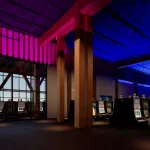
Campground Reservations Open
There may be snow on the ground but now is the time to start planning summer camping trips according to Cathy Corrigal, Visitor Services Team Leader at Prince Albert National Park. Visitor to national parks are encouraged to plan their travels by reserving campsites and experiences through the Parks Canada Reservation System.
“In previous years, the Parks Canada Reservation Service has been inundated with booking requests for sites in Prince Albert National Park,” said Corrigal, “To ensure faster processing when booking campsites online, we recommend creating an account before the service opens.”
The reservation service opens Prince Albert National Park for bookings on January 11, 2019 at 8:00 a.m. Central Standard Time. Visitors can make reservations for Beaver Glen Campground or Red Deer Campground online at: reservation.parkscanada.gc.ca Reservations can also be made through a toll free number by calling 1-877-737-3783.
All sites in Red Deer Campground and Beaver Glen Campground can be reserved using the Parks Canada Reservation Service. There are 161 full-service pull through sites in Red Deer Campground and 200 back-in campsites with electric service in Beaver Glen Campground. Beaver Glen also has 10 oTENTik sites that can be reserved. Both campgrounds operate from May 17, 2019 to October 14, 2019. Reservations are recommended for campers wanting to secure a campsites between these dates. The lowest vacancy rate is during the summer season and long weekends. Sites not reserved in Beaver Glen and Red Deer are available on a first come-first-served basis.


